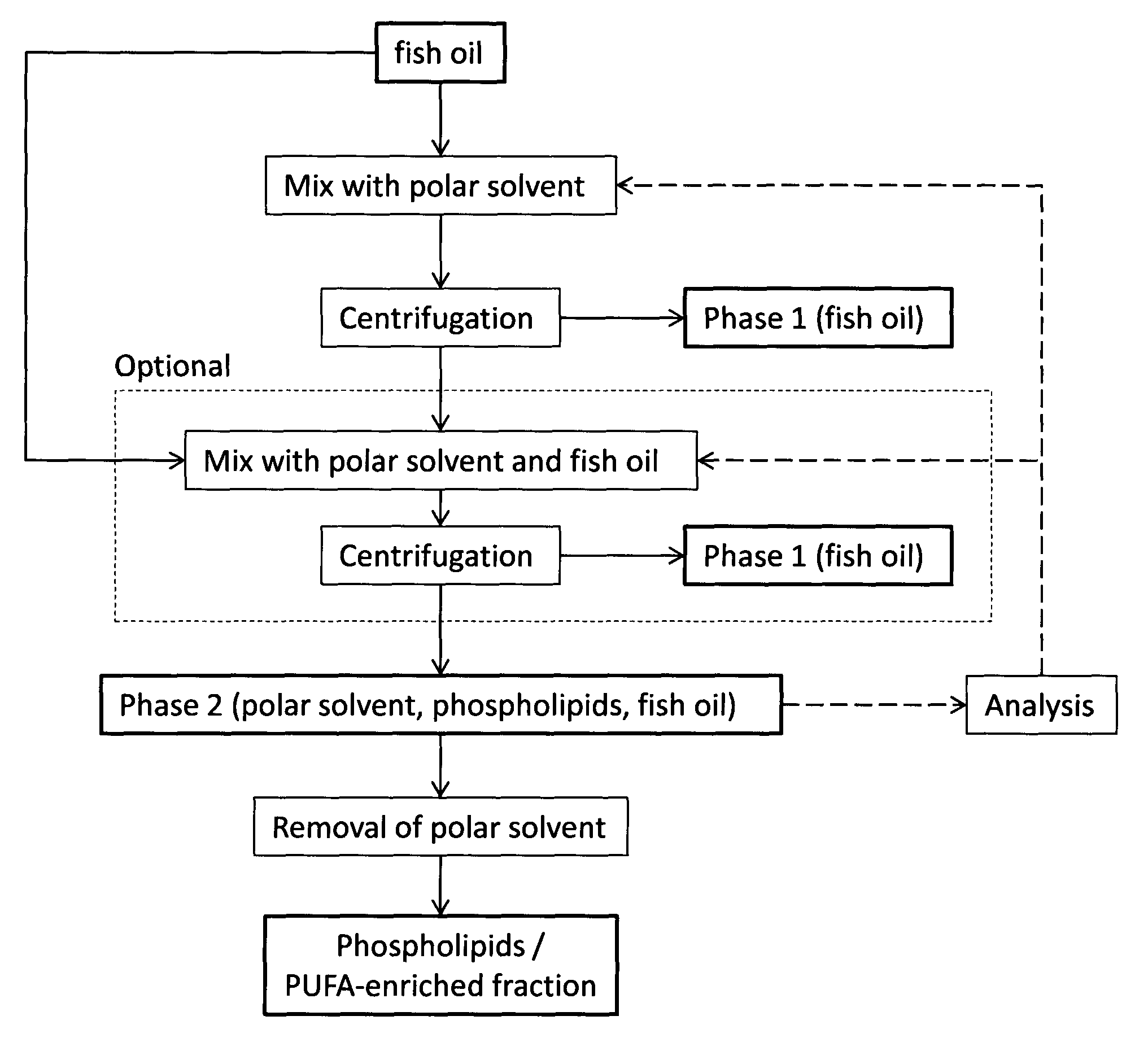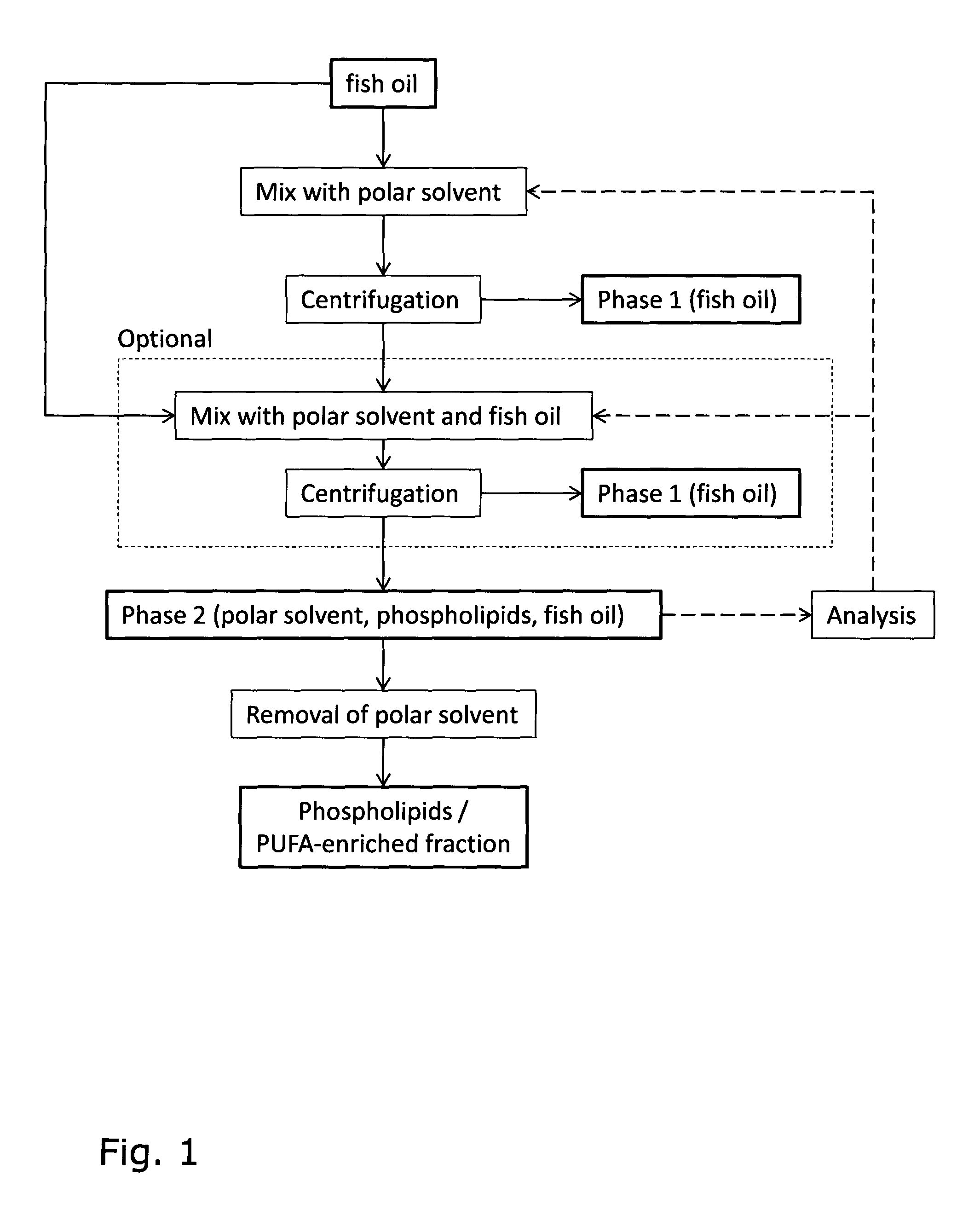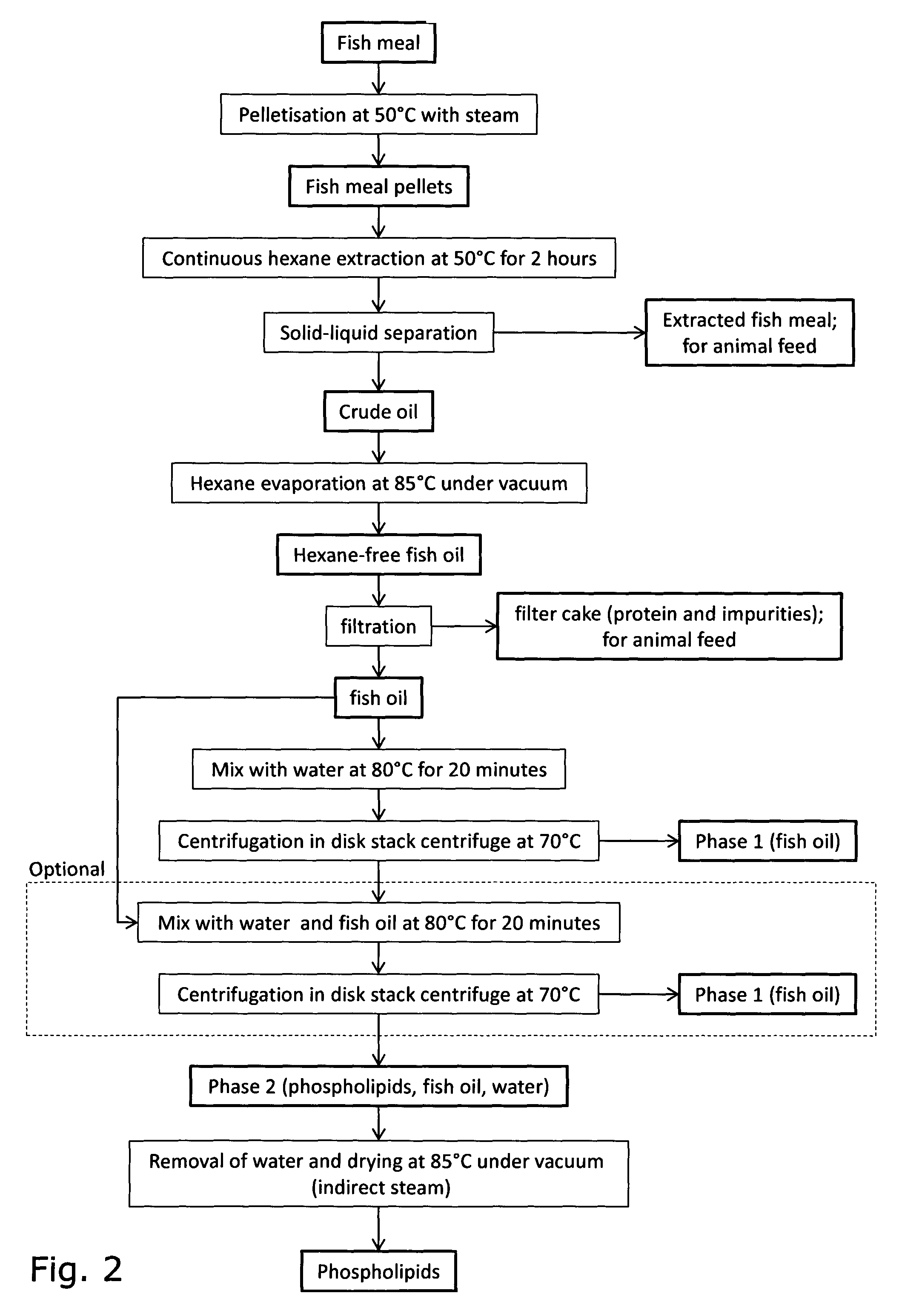Process for the isolation of a phospholipid
a technology of phospholipids and process, which is applied in the field of process for the isolation of phospholipids, can solve the problems of not being suitable for isolating phospholipids as a product, not being suitable for treating fish, and being considered unsuitable for the process of us2006/110521, so as to reduce the risk of microbial contamination and accelerate the overall process
- Summary
- Abstract
- Description
- Claims
- Application Information
AI Technical Summary
Benefits of technology
Problems solved by technology
Method used
Image
Examples
example 1
[0100]A batch of 500 tonnes of fish meal was treated in a continuous plant according to the invention. The raw material fish meal was extracted with isohexane as an extractant solvent following initial pelletisation. After evaporation of the isohexane the fish oil was extracted with water as a polar solvent before centrifugation in a disk stack centrifuge. Isohexane removed from the fish oil was recycled in the process. The phospholipids were finally isolated from the polar fraction by drying to remove the water. The parameter values employed in the process are summarised in Table 2 below.
[0101]
TABLE 2Process parameters for phospholipid preparationReactionUnit operationconditionsProductPelletisation50° C.Extraction with2 hoursisohexane52° C.Sieving to remove drymatterIsohexane removal10 mbar60 tonnes of fish oil with(evaporation)85° C.phospholipidsFiltering and polishingMixing with water at a50° C.water:fish oil ratio of15:85Extraction under20 minutesagitation60° C.Centrifugation in...
example 2
[0106]Fish were heated up to 85° C. and pressed to provide a presscake, which was subjected to continuous ethanol (96% ethanol in water) extraction for two hours at 65° C. The extracted presscake was subjected to solid-liquid separation to separate a crude oil containing ethanol from the extracted presscake. Ethanol was evaporated at 85° C. under vacuum to provide an ethanol-free fish oil, which was filtered to remove debris from the fish oil. The fish oil was then extracted with water as a polar solvent at 80° C. for 20 minutes followed by treatment in a disk stack centrifuge at 70° C. The polar fraction from the centrifugation was mixed with fish oil and water at a ratio of 48% polar fraction to 50% fish oil and 2% water, and the mixture was extracted at 80° C. for 20 minutes. The extracted mixture was then centrifuged in a disk stack centrifuge at 70° C. before removal of the water by drying at 85° C. under vacuum. This yielded a product enriched in phospholipids and PUFA's. The ...
PUM
| Property | Measurement | Unit |
|---|---|---|
| temperature | aaaaa | aaaaa |
| temperature | aaaaa | aaaaa |
| temperature | aaaaa | aaaaa |
Abstract
Description
Claims
Application Information
 Login to View More
Login to View More - R&D
- Intellectual Property
- Life Sciences
- Materials
- Tech Scout
- Unparalleled Data Quality
- Higher Quality Content
- 60% Fewer Hallucinations
Browse by: Latest US Patents, China's latest patents, Technical Efficacy Thesaurus, Application Domain, Technology Topic, Popular Technical Reports.
© 2025 PatSnap. All rights reserved.Legal|Privacy policy|Modern Slavery Act Transparency Statement|Sitemap|About US| Contact US: help@patsnap.com



